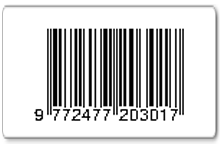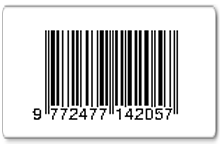Contextual Science Learning using Smartphone Audio Sensor Application (Phyphox) on Restitution Coefficient Measurement
Abstract
The cognitive development of elementary school student are at a concrete operational stage, so that prospective elementary school teachers must have knowledge and experience in managing contextual and meaningful learning. The obstacle to the implementation of practicum while online learning during the Covid-19 pandemic, so an alternative method is needed to carried out in a home experiment. In the daily life of the students, collision events are often encountered. Many kinds of playing ball (i.e., tennis balls, basketball, and ping-pong ball) are examples of collision events. This research aims are to develop material content elastic collision experiments of contextual science learning for prospective teachers using the Phyphox application. The Research and Development (R and D) through ADDIE design has been applied to achieve the objectives of this research. The stages of this research were carried out through the stages of Analysis, Design, Development, Implementation and Evaluation. This research has produced a material content elastic collision experiments of contextual science learning for prospective science teachers through using the Phyphox application. The average percentage of material expert validation results related to indicator of content quality, content compliance and content language is 93.33%. The experimental results show that the coefficient of restitution of the small basketball on the ceramic floor is 0.848; for tennis balls 0.716 and for ping-pong balls is 0.836. The collision for the three types of the balls with the floor are classified as partially elastic collisions. It can be concluded that the material content elastic collision experiments of contextual science learning for prospective science teachers using the Phyphox application are in very feasible criteria and valid to be implemented in basic science concept lectures. The implication of this research indicates that smartphone-based experiments using phyphox application motivate and makes various science experiments more accessible with simple methods to analyze experiment data. Home experiment activity using Phyphox application is recommended to help students to describe and determine the type of collision, determine the energy lost during a collision and the coefficient of restitution, draw a graph of the relationship between height and time in a contextual and meaningful way of science learning activity.
Keywords
Full Text:
PDFReferences
Antony, S & Elangkumaran P 2020, ‘An impact on teacher qualifications on student achievement in science: A study on the G.C.E (O/L) in trincomalee district’, International Journal of Engineering Science and Computing, vol. 10, no. 2, pp. 24690-24695.
Ballester, E., Castro-Palacio, J. C., Velázquez-Abad, L., Giménez, M. H., Monsoriu, J. A., & Ruiz, L. S. S. 2014, Smart physics with smartphone sensors. In 2014 IEEE Frontiers in Education Conference (FIE) Proceedings (pp. 1-4). IEEE. doi: 10.1109/FIE.2014.7044031.
Bara, F. M. 2021, Analisis Percepatan Gravitasi Menggunakan Aplikasi Phyphox Pada Gerak Jatuh Bebas. Jurnal Luminous: Riset Ilmiah Pendidikan Fisika, vol. 2, no. 2, pp. 11-17. doi: http://dx.doi.org/10.31851/luminous.v2i2.5923
Carroll, R., & Lincoln, J. 2020, Phyphox app in the physics classroom. The Physics Teacher, vol. 58, no. 8, pp. 606-607. doi:https://doi.org/10.1119/10.0002393
Carbonneau, K.J., Marley, S.C. and Selig, J.P., 2013. A meta-analysis of the efficacy of teaching mathematics with concrete manipulatives. Journal of Educational Psychology, vol. 105, no. 2, p. 380. doi: https://psycnet.apa.org/doi/10.1037/a0031084
Cheung, L. (2016). Using the ADDIE model of instructional design to teach chest radiograph interpretation. Journal of Biomedical Education, 2016, 1-6. doi: https://doi.org/10.1155/2016/9502572
Colt, M., & Sebe, C. 2019, Smartphone used in physics experiments. The 14th International Conference on Virtual Learning Proceedings (pp. 524-530). ICVL.
Cross, R. 2021, Coefficients of restitution for a collision. Physics Education, vol. 56. no. 6, 065017. doi: 088/1361-6552/ac1f6e
El Islami, R. A. Z., Nuangchalerm, P., & Sjaifuddin, S, '2018, 'Science process of Environmental Conservation: Cross National Study of Thai and Indonesian Pre-service Science Teachers, Journal for the Education of Gifted Young Scientists, vol.6, no.4, pp. 72-80.
El Islami, R. A. Z., & Nuangchalerm, P. 2020, 'Comparative study of scientific literacy: Indonesian and Thai pre-service science teachers report, Int. J. Eval. & Res. Educ. vol, 9, no. 2, pp. 261-68.
Fu, Q.K., Lin, C.J., Hwang, G.J. and Zhang, L., 2019. Impacts of a mind mapping-based contextual gaming approach on EFL students’ writing performance, learning perceptions and generative uses in an English course. Computers & Education, 137, pp. 59-77. doi: https://doi.org/10.1016/j.compedu.2019.04.005
Fox, M.F., Werth, A., Hoehn, J.R. and Lewandowski, H.J. 2020, Teaching labs during a pandemic: Lessons from Spring 2020 and an outlook for the future. arXiv preprint arXiv:2007.01271.
Giancoli, Douglas C. 2001, Fisika. Edisi Kelima Jilid 1. Erlangga. Jakarta.
González, M. Á., da Silva, J. B., Cañedo, J. C., Huete, F., Martínez, Ó., Esteban, D., ... & González, M. Á. 2015, Doing physics experiments and learning with smartphones. In Proceedings of the 3rd International Conference on Technological Ecosystems for Enhancing Multiculturality (pp. 303-310). doi: https://doi.org/10.1145/2808580.2808626
Haryanto, P. C., & Arty, I. S. 2019, The application of contextual teaching and learning in natural science to improve student’s HOTS and self-efficacy. In Journal of Physics: Conference Series (vol. 1233, no. 1, p. 012106). IOP Publishing. doi: 10.1088/1742-6596/1233/1/012106
Hochberg, K., Kuhn, J. and Müller, A. 2018, Using smartphones as experimental tools—effects on interest, curiosity, and learning in physics education. Journal of Science Education and Technology, vol. 27, no. 5, pp. 385-403. doi: https://doi.org/10.1007/s10956-018-9731-7
Howard, D. and Meier, M. 2021, Meeting laboratory course learning goals remotely via custom home experiment kits. The Physics Teacher, vol. 59, no. 6, pp. 404-409. doi: https://doi.org/10.1119/5.0021600
Hwang, W.Y. and Purba, S.W.D., 2021. Effects of Ubiquitous-Physics App on Students’ Inquiry Behaviors and Learning Achievements. The Asia-Pacific Education Researcher, vol. 31. no, 4, pp. 439-450. doi: https://doi.org/10.1007/s40299-021-00585-7
Kuhn, J., & Vogt, P. 2013, Applications and examples of experiments with mobile phones and smartphones in physics lessons. Frontiers in Sensors, vol. 1, no. 4, pp. 67-73.
Maryam, E. and Fahrudin, A. 2020, Pengembangan Sound Card Laptop sebagai Alat Praktikum Fisika untuk Penentuan Percepatan Gravitasi Bumi. Silampari Jurnal Pendidikan Ilmu Fisika, vol. 2, no. 1, pp. 29-40. doi: https://doi.org/10.31540/sjpif.v2i1.926
Maphoso, LST & Mahlo, D 2015, ‘Teacher qualifications and pupil academic achievement’, Journal of Social Sciences, vol. 42, no. 1-2, pp. 51-58. doi: 10.1080/09718923.2015.11893393
Müller, H. 2018, Quantum Gravity Aspects of Global Scaling and the Seismic Profile of the Earth. Progress in Physics, vol. 14, no. 1, pp. 41-45.
Mnguni, L., El Islami, R. A. Z., Hebe, H., Sari, I. J., & Nestiadi, A 2020 'A comparison of the South African and Indonesian teachers preferred curriculum ideology for school science', Curriculum Perspectives, vol.40, no.1, pp. 3-13.
Neftyan, C.C.A., Suyanto, E. and Suyatna, A. 2018, The influence of learning using contextual teaching and learning approach to physics learning outcomes of high school students. International Journal of Advanced Engineering, Management and Science (IJAEMS), vol. 4, no. 6, pp. 446-450.
Nuangchalerm, P., & El Islami, R. A. Z 2018, 'Comparative study between Indonesian and Thai novice science teacher students in content of science. Journal for the Education of Gifted Young Scientists', vol.6, no.2, pp. 23-9.
Noskowiak, A. M. A. 2016, Empirical verification of a digital model of a basketball to assess elastic properties of sports floors. Annals of Warsaw University of Life Sciences-SGGW, Forestry and Wood Technology, vol. 95, pp. 227-230.
Oprea, M. and Miron, C. 2014, Mobile phones in the modern teaching of physics. Romanian reports in Physics, vol. 66, no. 4, pp. 1236-1252.
Ott, L. E., Carpenter, T. S., Hamilton, D. S., & LaCourse, W. R. 2018. 'Discovery Learning: Development of a Unique Active Learning Environment for Introductory Chemistry. Journal of the Scholarship of Teaching and Learning, vol. 18, no.4, pp. 161–180. https://doi.org/10.14434/josotl.v18i4.23112
Parmin, P., Khusniati, M., El Islami, R. A. Z., Deta, U. A., & Saregar, A 2022, 'Online Scientific Argumentation Strategy on Improving Pre-Service Science Teachers’ Scientific Reasoning through Experiment Activity: A Case Study in Indonesia, Science and Education, vol. 55, no.1, pp. 607-19.
Parmin, P., Nuangchalerm, P., & El Islami, R. A. Z. 2019, 'Exploring the indigenous knowledge of Java North Coast Community (Pantura) using the science integrated learning (SIL) model for science content development. Journal for the Education of Gifted Young Scientists, vol.7, no.1, pp. 71-83.
Pierratos, T., & Polatoglou, H. M. 2020, Utilizing the phyphox app for measuring kinematics variables with a smartphone. Physics Education, vol. 55, no.2, pp. 025019. doi: 10.1088/1361-6552/ab6951
Rannastu-Avalos, M., & Siiman, L. A. 2020, Challenges for distance learning and online collaboration in the time of COVID-19: Interviews with science teachers. In International Conference on Collaboration Technologies and Social Computing (pp. 128-142). Springer, Cham.
Rowan, B, Correnti, R, Miller, R 2002, ‘What large-scale survey research tells us about teacher effects on student achievement: Insights from the prospects study of elementary schools’, Teachers College Record, vol. 104, pp. 1525-1567. doi: 10.1111/1467-9620.0
Saeidnia, H. R., Kozak, M., Ausloos, M., Herteliu, C., Mohammadzadeh, Z., Ghorbi, A. & Hassanzadeh, M. (2022). Development of a Mobile app for self-care against COVID-19 using the analysis, design, development, implementation, and evaluation (ADDIE) model: methodological study. JMIR formative research, vol. 6, no. 9, pp. e39718. doi: 10.2196/39718
Serway, R. A., & Jewett, J. W. (2018). Physics for scientists and engineers. Cengage learning.
Simamora, R.E. and Saragih, S. 2019, Improving Students' Mathematical Problem-Solving Ability and Self-Efficacy through Guided Discovery Learning in Local Culture Context. International Electronic Journal of Mathematics Education, vol. 14, no. 1, pp. 61-72.
Smith, C. and Worsfold, K. 2014, WIL curriculum design and student learning: a structural model of their effects on student satisfaction. Studies in Higher Education, vol. 39, no. 6, pp. 1070-1084. doi: https://doi.org/10.1080/03075079.2013.777407
Staacks, S., Hütz, S., Heinke, H., & Stampfer, C. 2018, Advanced tools for smartphone-based experiments: phyphox. Physics education, vol. 53, no. 4, pp. 045009. doi: 10.1088/1361-6552/aac05e
Vogt, P., & Kuhn, J. 2014, Analyzing collision processes with the smartphone acceleration sensor. The Physics Teacher, vol. 52, no. 2, pp. 118-119. doi: https://doi.org/10.1119/1.4862122
Volioti, C., Keramopoulos, E., Sapounidis, T., Melisidis, K., Zafeiropoulou, M., Sotiriou, C., & Spiridis, V. (2022). Using Augmented Reality in K-12 Education: An Indicative Platform for Teaching Physics. Information, vol. 13, no. 7, 336. doi: https://doi.org/10.3390/info13070336
DOI: http://dx.doi.org/10.30870/jppi.v8i2.13400
Refbacks
- There are currently no refbacks.
Copyright (c) 2022 Jurnal Penelitian dan Pembelajaran IPA

This work is licensed under a Creative Commons Attribution 4.0 International License.
Jurnal Penelitian dan Pembelajaran IPA is licensed under a Creative Commons Attribution 4.0 International License
Copyright © 2025 Jurnal Penelitian dan Pembelajaran IPA. All rights reserved.






